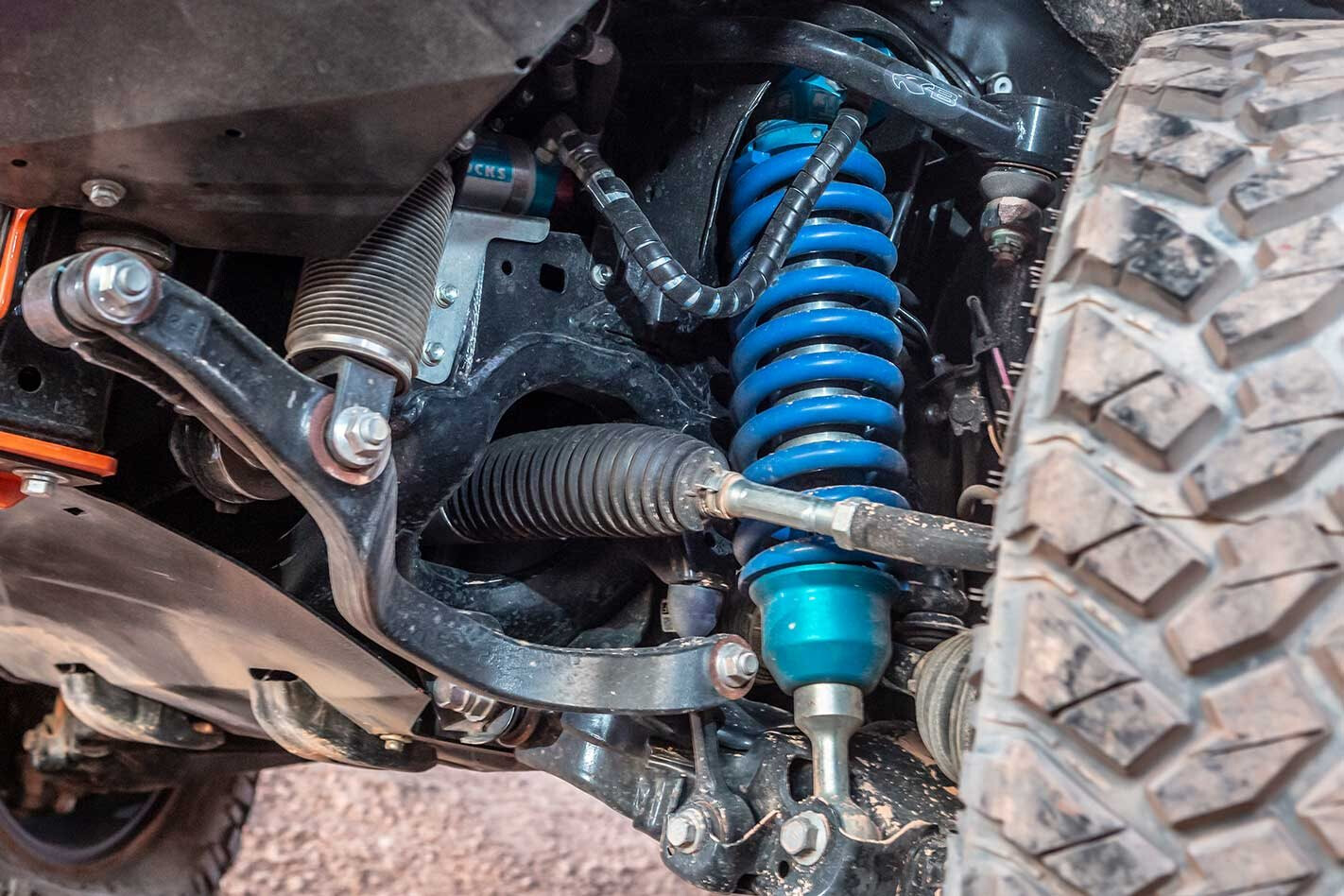Suspension. You probably think of it in terms of lift kits and making your 4×4 more capable off-road, which is a natural thing to do given ground clearance is the single most important attribute when it comes to how well a vehicle works off road.
But suspension is far more than that and is a make-or-break factor in how well your 4×4 works everywhere, on and off road. And while you may also think your suspension works harder off road than on road, it’s more likely the reverse of that is true, depending of course on your particular on- and off-road driving regime.

What makes suspension work hard is not only the bumps and dips it has to cope with but the speed at which the vehicle is travelling when it hits these bumps and dips. At crawling pace – first gear, low range – no matter how big the bumps or deep the dips, your suspension doesn’t work all that hard even if it is moving through its full travel. And under these conditions you don’t even need particularly sophisticated suspension, as the dampers have less work to do. At absolute snail-pace driving, even with extreme full-travel conditions, you could even ditch the dampers to no great ill effect, especially with leaf springs with their inherent self-damping characteristics.
On-road driving – most obviously – brings in the element of higher vehicle speeds, and speed combined with bumps is where the suspension really has to start working hard. Not only that but dampers, which are largely irrelevant at off-road crawling pace, become the key ingredient even at moderate road speeds let alone at high road speeds. What’s more, getting the damper tuning right is the key to getting the suspension to work well and is a more nuanced art than getting the spring rates right, which in comparison is a more straightforward engineering exercise.

All this is most important in Australia given there’s a far greater distance of bumpy roads than smooth roads, and once you’re in the country and away from any interstate expressway, it’s all bumpy roads – to varying degrees – anyway. Getting the suspension on any vehicle working just right is a vital element to having the whole vehicle work on Australian roads. You can have a brilliant powertrain, but without a suspension that provides stability and agility where it’s needed on all road surfaces it will be wasted.
The secret to having a suspension that works well on Australia’s bumpy roads at higher speeds is longer-travel suspension architecture, as the more travel that’s available to be used, the softer the springs you can employ. Softer, long-travel suspension simply soaks up the bumps better. Drive a Ford Ranger Raptor if you’re not convinced.
The key to this making long-travel suspension work are well-tuned dampers to control the spring movement. You also need dampers that stand up over time to all the work they have to do coping with bumpy roads traversed at speed.

Unfortunately, most new 4x4s (and cars more so) come with relatively low-quality dampers. Even if the as-new damper tune is okay, the dampers soon lose their ability to replicate the as-new damping force as the damping fluid breaks down and/or becomes aerated. It’s a regular occurrence when we take away a new 4×4 for a week, or even a couple of days, and drive it over rough roads at normal touring speeds only to come back with suspension noticeably poorer for the experience.
The trouble is good quality dampers are expensive and, given each new 4×4 or car has four of them, the cost soon starts to add up for any manufacturer who wishes to use quality dampers instead of the usual budget items installed in vehicles produced in high volumes. And even with quality dampers you still need to get the tuning right, which is arguably the ‘blackest’ of all automotive arts.





